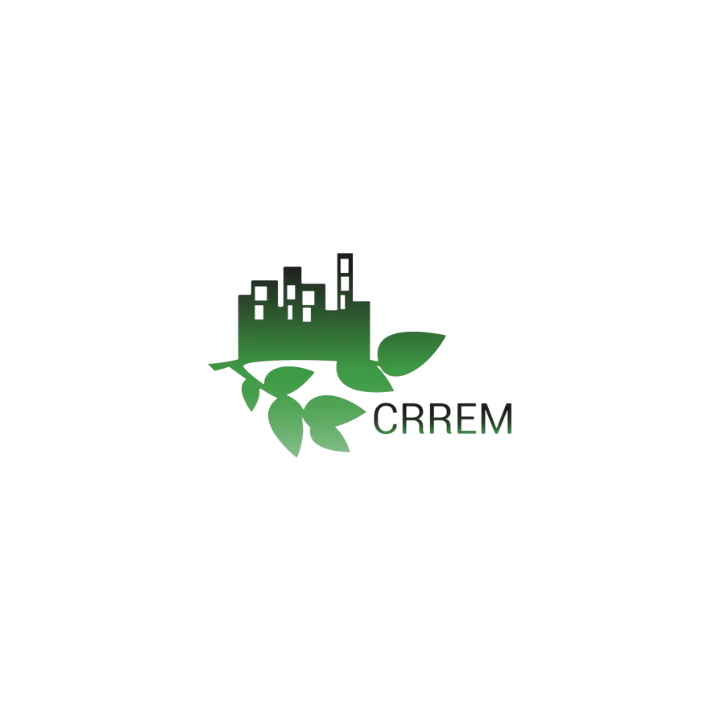CRREM: Emission pathways as orientation for a decarbonization strategy in the building sector
In order to limit the effects of climate change, the participants at the 2015 UN Climate Change Conference in Paris agreed to limit average global warming to well below 2°C compared to pre-industrial levels. This requires a massive reduction in greenhouse gas emissions. In order to achieve this ambitious transformation towards CO2 neutrality, an effective decarbonization strategy is needed in all sectors. The real estate sector in particular offers great potential for savings, as it is responsible for around 38% of energy consumption and 29% of all greenhouse gas emissions in the EU.
The European Union is therefore planning massive cuts in greenhouse gas emissions in the building sector as part of its decarbonization strategy: the entire European building stock is to become climate-neutral by 2050. This goal can only be achieved with an ambitious renovation policy in order to adapt the building stock to changing requirements and regulations. Emission pathways as orientation for a decarbonization strategy in the building sector.
We offer:
- personal advice
- Information about CRREM and the Risk Assessment Tool
- Support in the implementation of energy optimization and energy-efficient refurbishment measures
- Information on other building certifications, e.g. GRESB, DGNB, LEED and many more.
Outdated building stock poses an economic risk for real estate entrepreneurs
Carbon risk is the term used to describe the financial risk to companies associated with high carbon intensity of properties and portfolios as the economy continues to move towards carbon neutrality. High emissions therefore not only impact the environment, but also threaten the business case of real estate entrepreneurs if they do not take action to transform the real estate portfolio they manage. Real estate investment strategies are guided by global and national environmental targets such as the Paris Agreement and the EU’s targets for reducing CO2 in real estate portfolios. Properties that cannot meet these market expectations in the long term quickly become stranded assets. To counteract this, investors and real estate owners must try to assess the stranding risk of their assets and take targeted measures to reduce CO2 risk factors and avoid product failure and depreciation due to climate change.
Avoid stranded assets – CRREM tool offers assistance for investors and real estate owners
With the Carbon Risk Real Estate Monitor(CRREM), a project was launched that addresses precisely this point: CRREM and the associated tool were developed to make it easier for property owners and lenders to recognize the potential financial risks associated with poor energy efficiency and the effects of climate change on the building stock. In addition, CRREM provides target values that provide guidance for a sensible and effective strategy to reduce CO2 emissions. CRREM defines science-based decarbonization pathways that are in line with the Paris climate goals. CRREM has derived the decarbonization pathways by breaking down the global budget for anthropogenic greenhouse gas emissions to individual countries, the commercial real estate sector, property types and individual assets in line with the Paris Climate Agreement. The pathways can be applied at property, portfolio and company level and are available individually for individual countries and uses and for the 1.5 and 2 degree targets respectively.
The defined pathways and target values offer investors in European commercial real estate a roadmap for the transition of individual properties and portfolios to a sustainable building stock in order to reduce the carbon footprint in the coming decades. Each pathway extends to 2050 and consists of annual target values for CO2 and energy intensities in kWh/m2 and CO2/m2.
How does the CRREM Risk Assessment Tool work?
The software developed as part of the CRREM project derives CO2 emission intensities and energy consumption intensities and assesses the 2-degree readiness of each analyzed property. The software is XLS-based and helps to identify properties in the portfolio that are at risk of stranding due to increasingly stringent building codes and regulations and rising CO2 prices. In other words, it assesses whether a property can cope with the changing requirements associated with limiting global warming to a maximum of 2°C. In addition to identifying CO2 risks, the tool also helps to identify and visualize improvement strategies. The CRREM tool offers the possibility to assess the progress of a portfolio’s CO2 reduction performance against the reduction targets (the developed “pathways”) according to the Paris Agreement (i.e. limiting global warming to 2°C / 1.5°C). The tool can also be used to analyze the impact of the refurbishment of individual properties on a company’s overall CO2 performance.
For which types of real estate can the CRREM tool be used?
The tool was originally developed for commercial real estate in Europe. Over time, however, the scope of the project has evolved: global decarbonization pathways have now also been developed for commercial properties outside Europe and residential properties.
Commercial building use within the EU/UK is directly integrated into the tool, but it can also be used outside the EU and for residential buildings. If the tool is to be modified for another region, there are various factors that need to be taken into account. Manual input is required for HDD/CDD days and other data such as the development of CO2 prices over time.
CRREM and GRESB
GRESB is a rating system for measuring and evaluating the sustainability performance of entire real estate portfolios according to ESG criteria. It is designed to make it easier for investors to access reliable data on the ESG performance of potential investments. GRESB is part of the CRREM project and offers its users the option of having the stored portfolio data automatically transferred to the CRREM tool in order to identify potential transition risks for individual assets and provide guidance on existing CRREM paths.
If you have any questions about CRREM and energy-efficient retrofitting, please do not hesitate to contact us.
Phone +49 711 62049-340
Email info@hoinka.com


